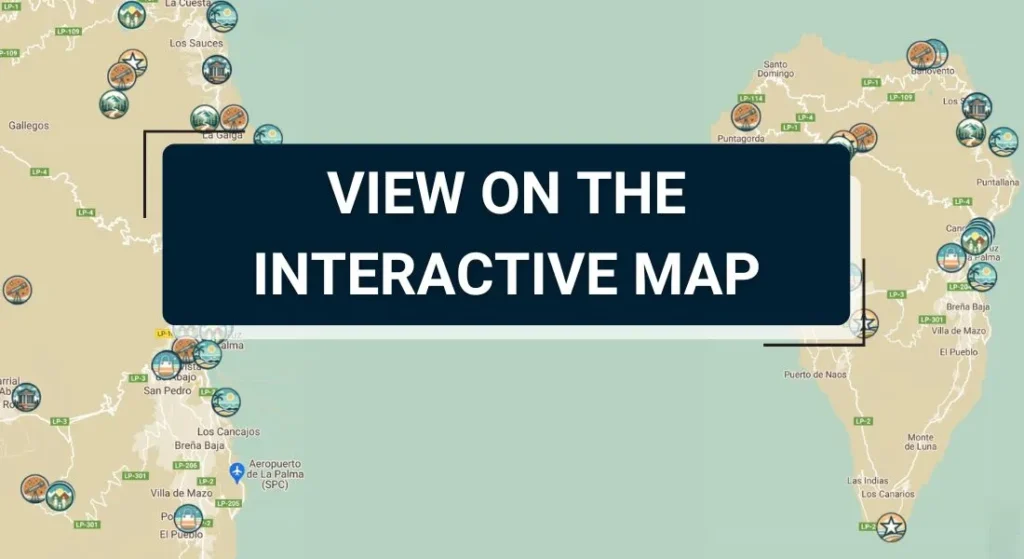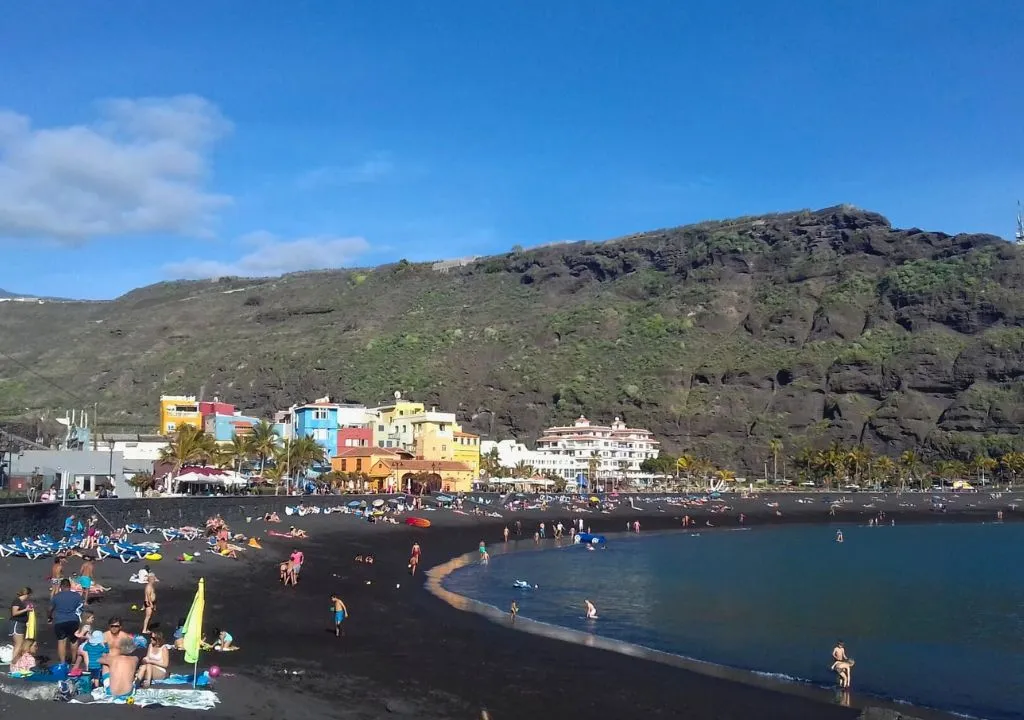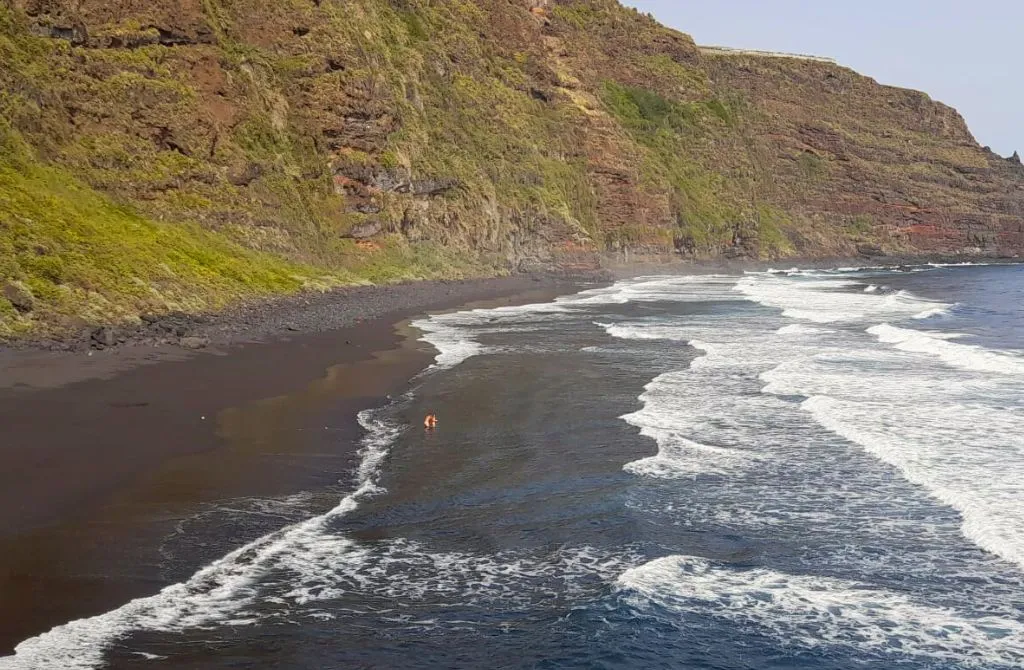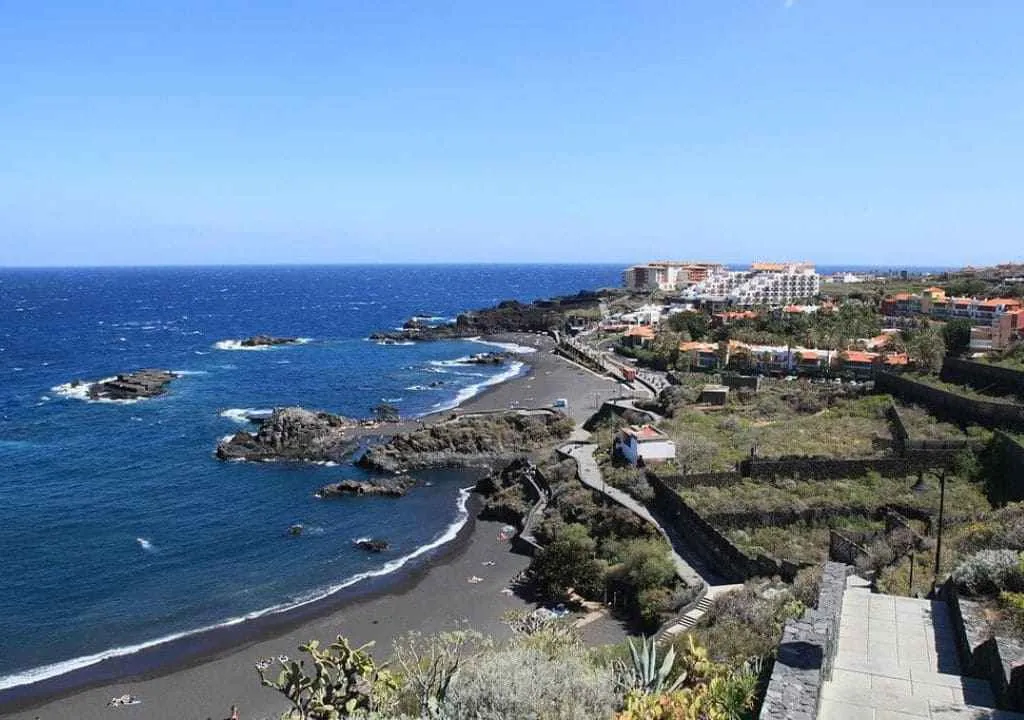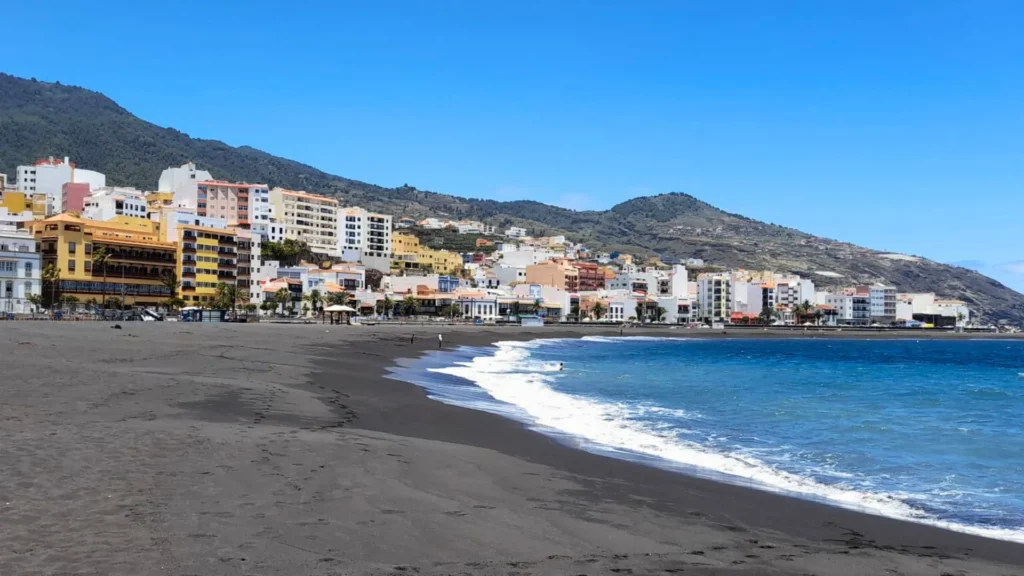Born in 1971 after the eruption of the Teneguía volcano, Playa de Echentive is a raw, wild beach with black sand and natural pools. A magical place to reconnect with nature’s force and enjoy unforgettable sunsets.
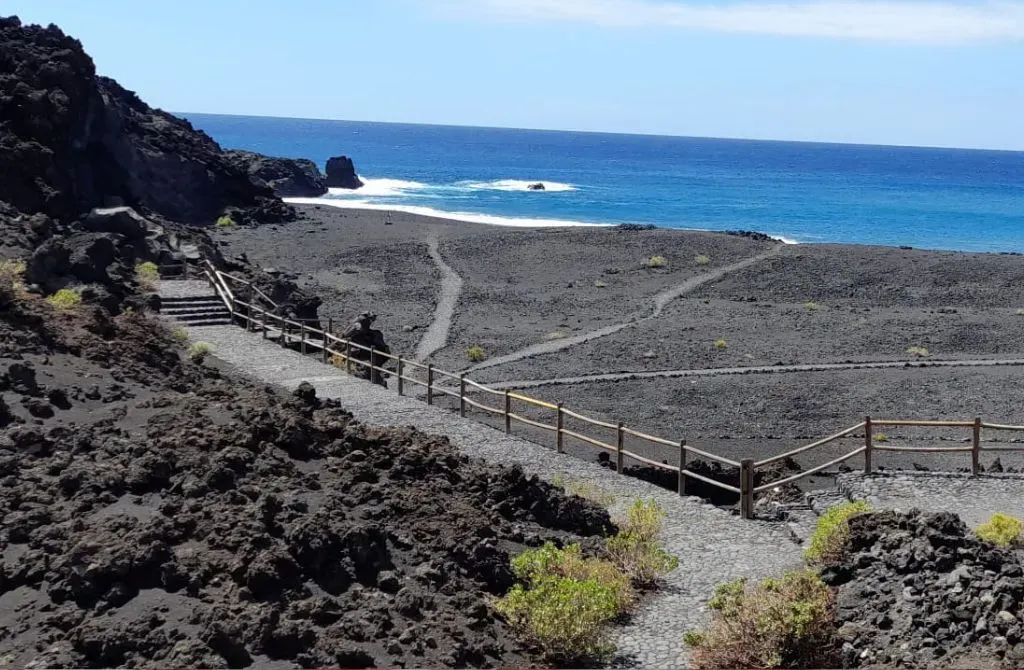
Main Features
| Detail | Information |
|---|---|
| Length | Approx. 230-280 m |
| Type of sand | Volcanic black sand with gravel and pebbles |
| Natural pools | Several rock pools |
| Access | Accessible by car or trail from parking lot, bus line 23 |
| Services | No lifeguards, no toilets or showers |
| Surroundings | Surrounded by Teneguía lava flows, endemic flora and dramatic sunsets |
What to do in Playa de Echentive
- Relax in volcanic pools like El Aljibe, ideal for a protected swim.
- Explore the famous “Fuente Santa“, a buried hot spring still reaching 60 °C.
- Hike to the Fuencaliente lighthouse and Salinas, a scenic route across lava fields and coastal cliffs.
- Photography & sunsets: the contrast of black rocks, turquoise pools and golden skies is truly otherworldly.
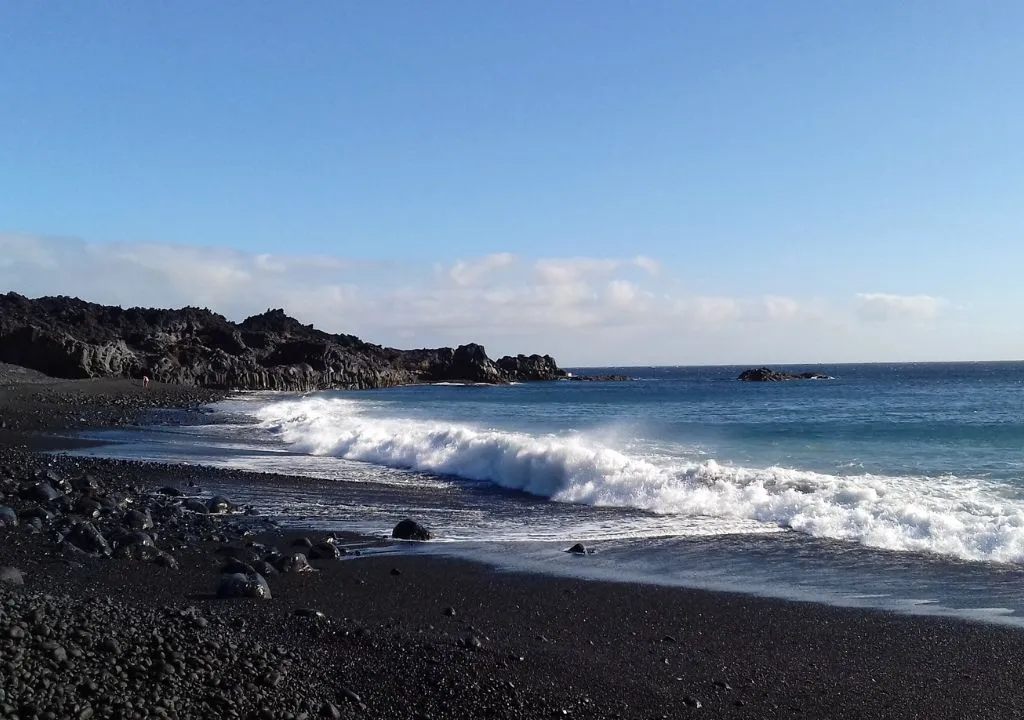
YOUR EXPERIENCE SHINES HERE
If you’ve visited this place, share your impressions and leave a small trace of your journey. Help other travelers discover the true beauty of La Palma.
*Your review is completely anonymous
Practical Tips
- Footwear: Water shoes or sturdy sandals are essential
- Arrive early: Limited parking, especially busy on weekends.
- Swim safely: Pools are generally calm, but open sea can be dangerous.
- No facilities: Bring enough water and snacks for your stay.
- No shade: Bring an umbrella or hat and avoid strong midday sun if you have sensitive skin.
- Sharp rocks: Around the pools, the terrain is rough, best for bathing and relaxing on the flatter beach area.
- Not recommended for small children.
- There is no telephone coverage
- Respect the environment: Don’t litter, don’t disturb rocks or wildlife.
The Ancient Fuente Santa: La Palma’s hidden thermal treasure
Beneath the black sand and lava formations of Echentive beach lies one of La Palma’s most legendary and spiritual secrets: La Fuente Santa, the “Sacred Spring”.
Already known by the island’s indigenous Benahoarites, this hot spring became famous in Europe for its supposed healing powers. People came from all over to treat skin diseases and rheumatic conditions in its mineral-rich waters. So important was the spring that it gave its name to the town: Fuencaliente, literally “hot fountain”.
In November 1677, the eruption of the San Antonio volcano buried the spring beneath thick lava, pushing the coastline 400 meters further into the ocean. The site was lost for centuries, surrounded by myths.
In 2005, after extensive geological studies, the spring was rediscovered, with waters still reaching 60 °C beneath the surface of the new volcanic delta.
Today, the Fuente Santa remains hidden underground, a symbol of resilience and healing. The Canary Islands Government has plans to tap into this thermal source and develop a spa in the future, bringing back to life one of La Palma’s most powerful natural wonders.

